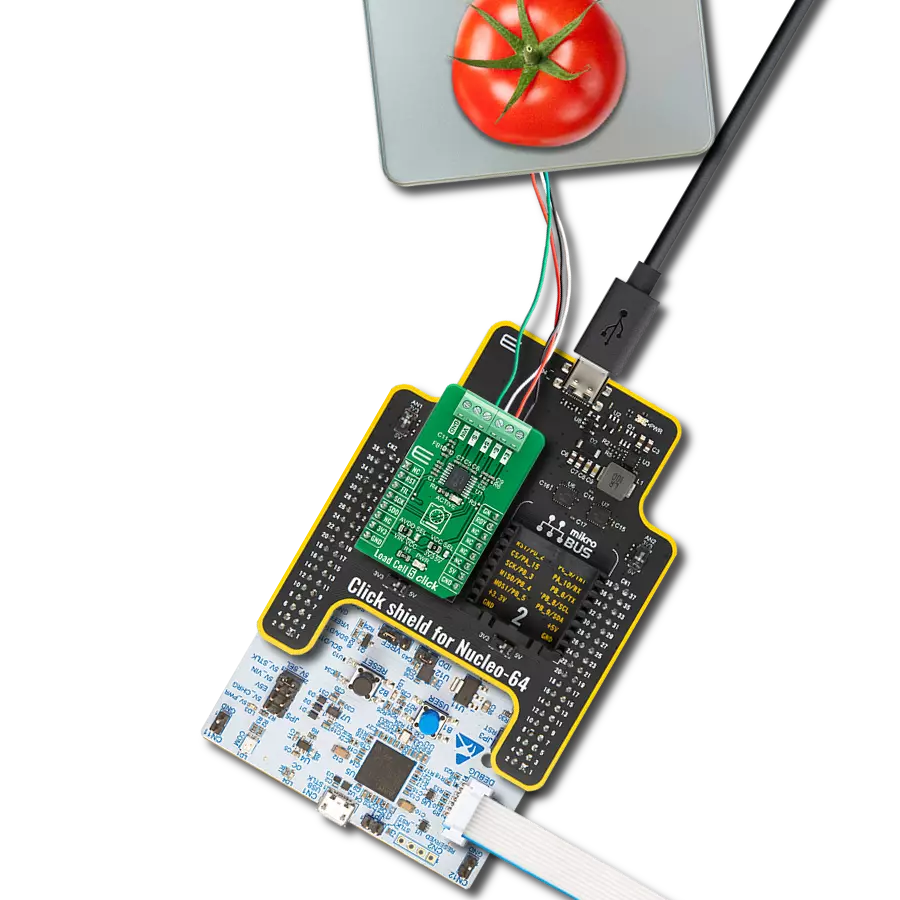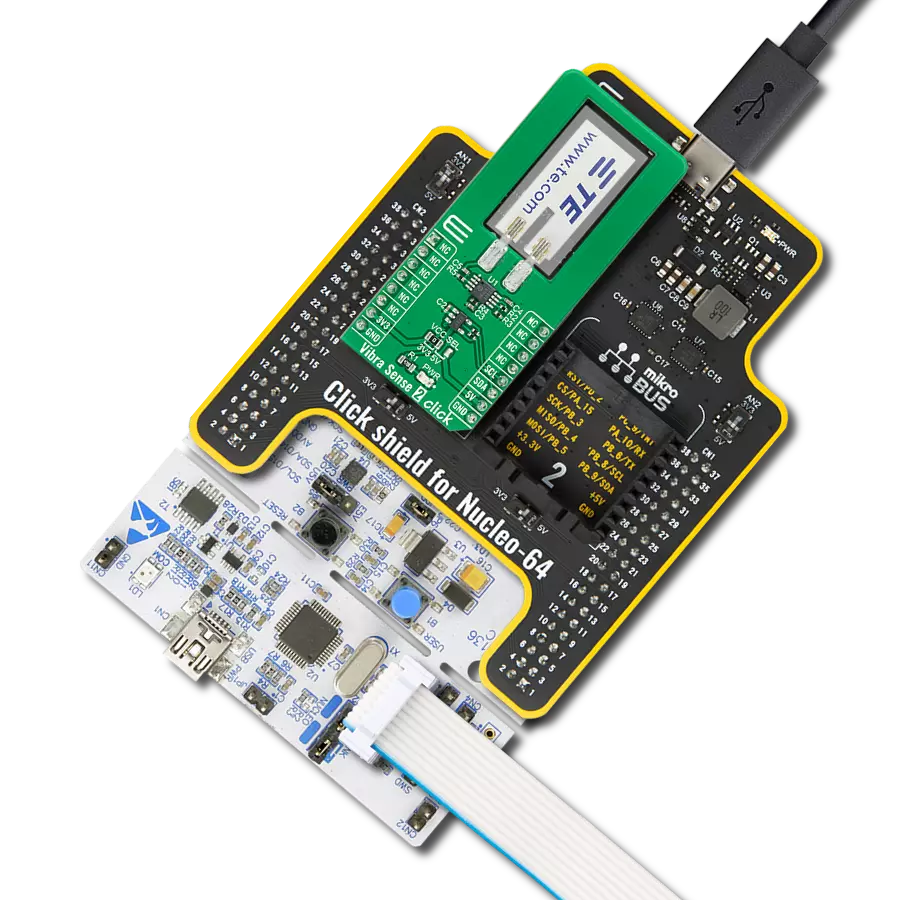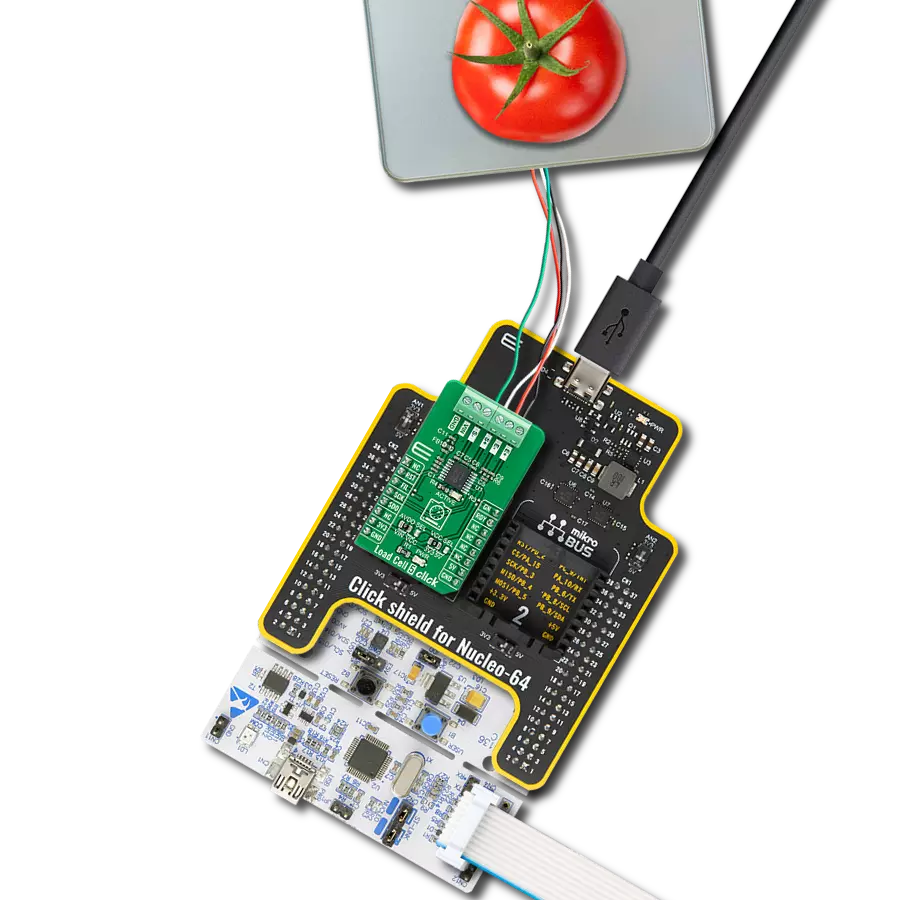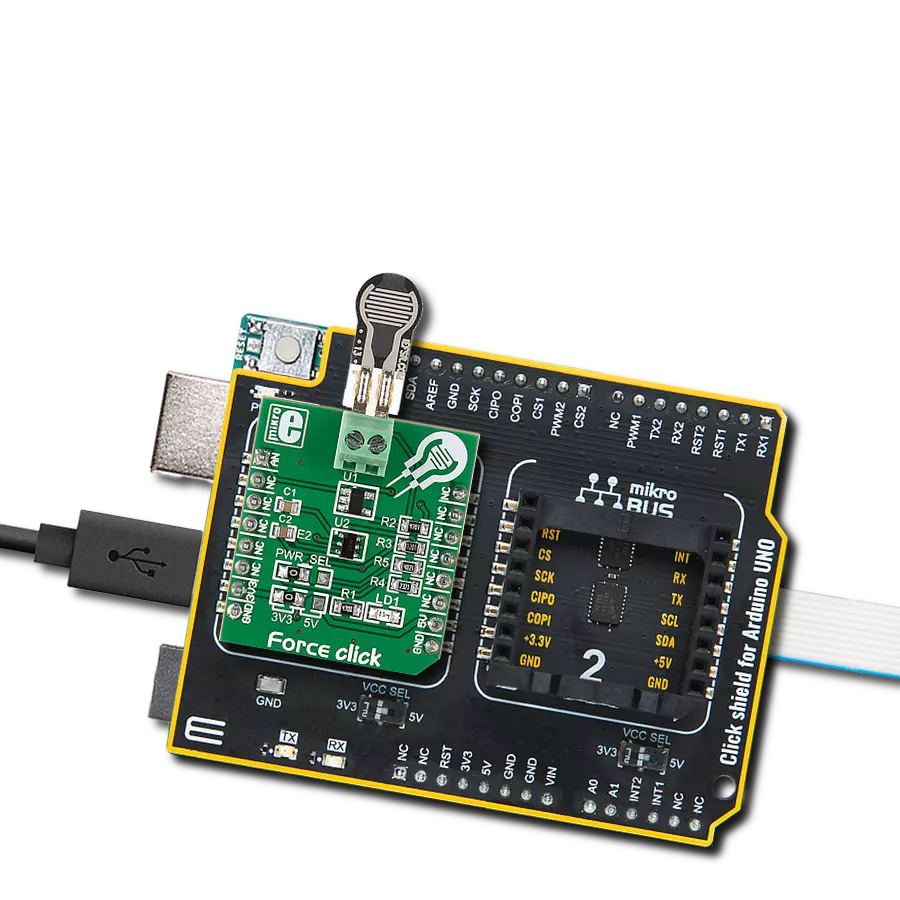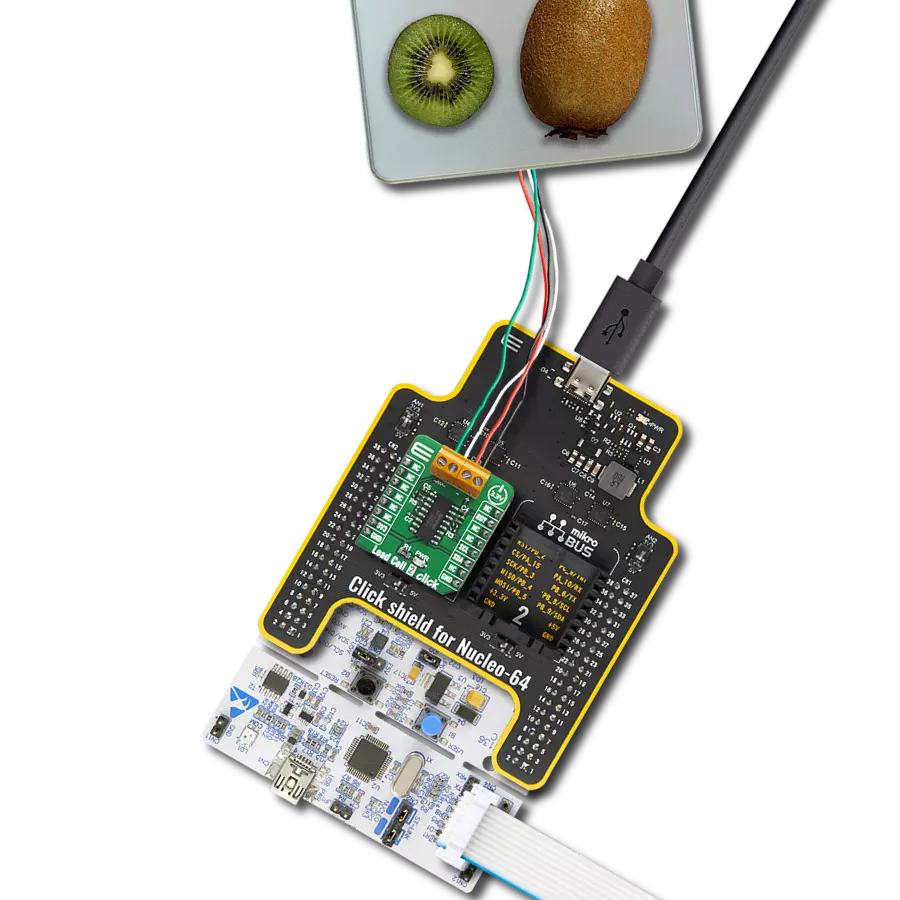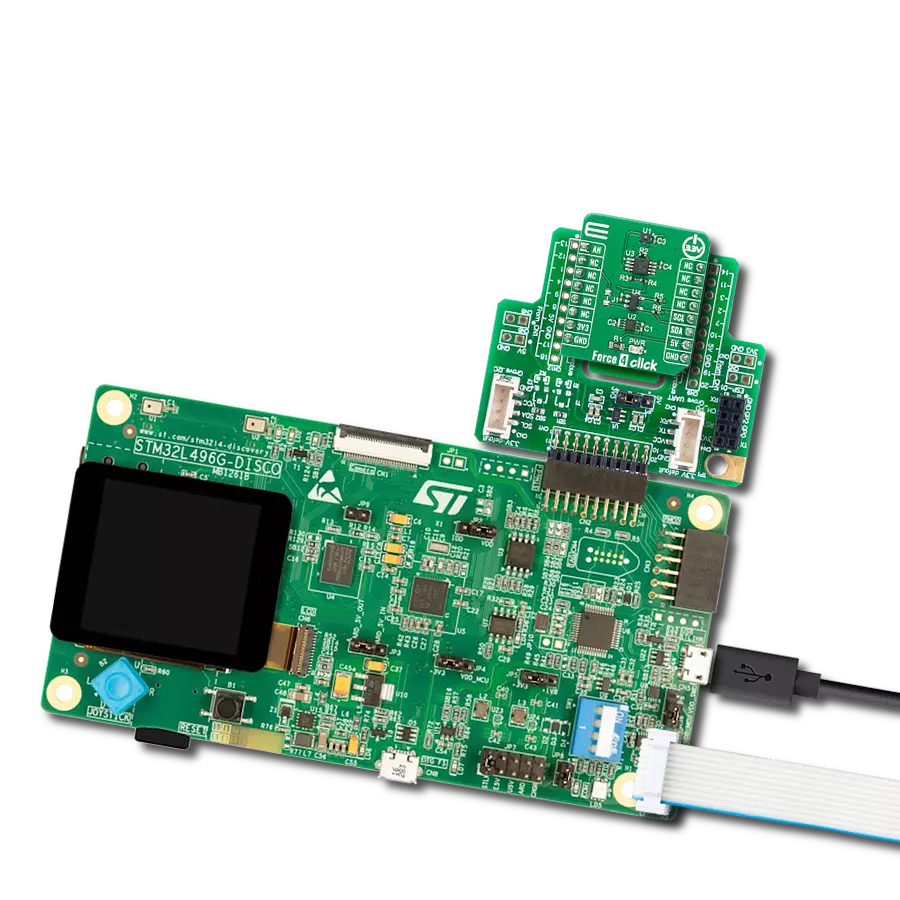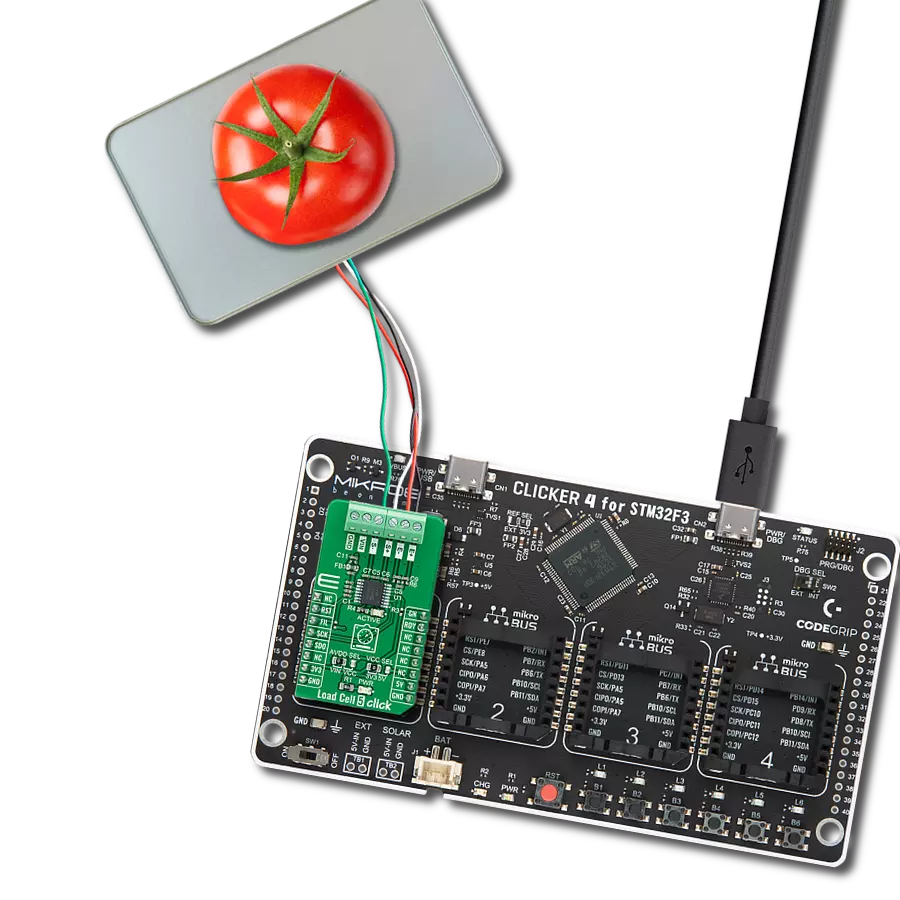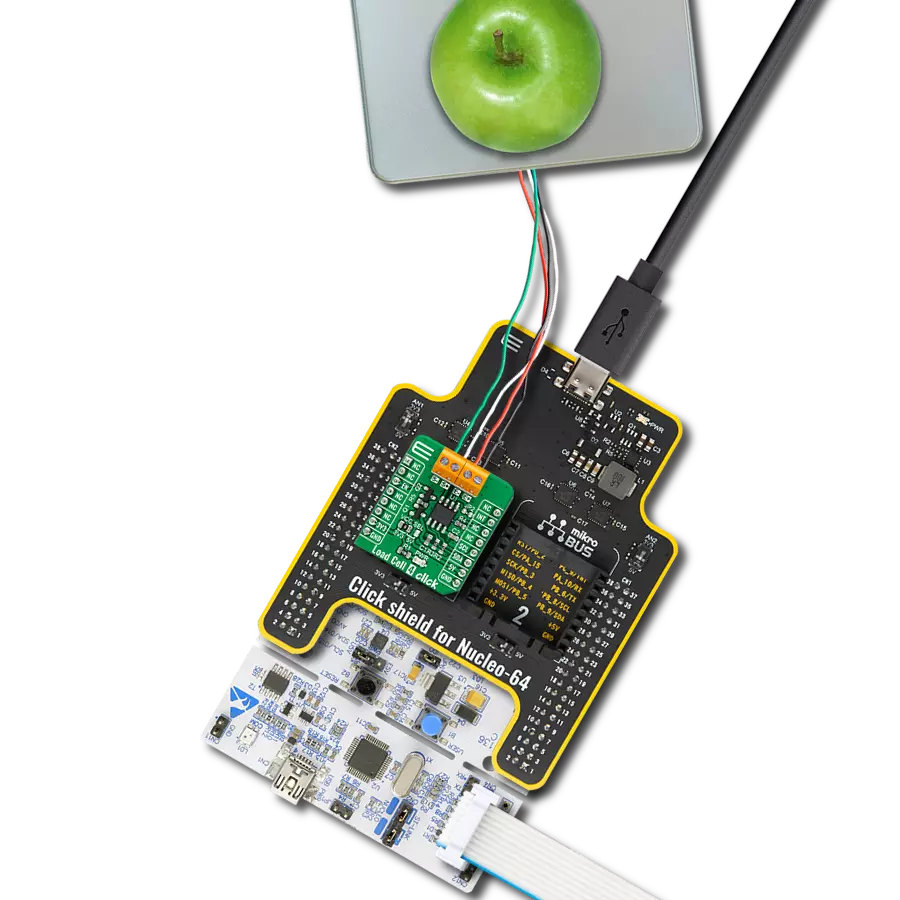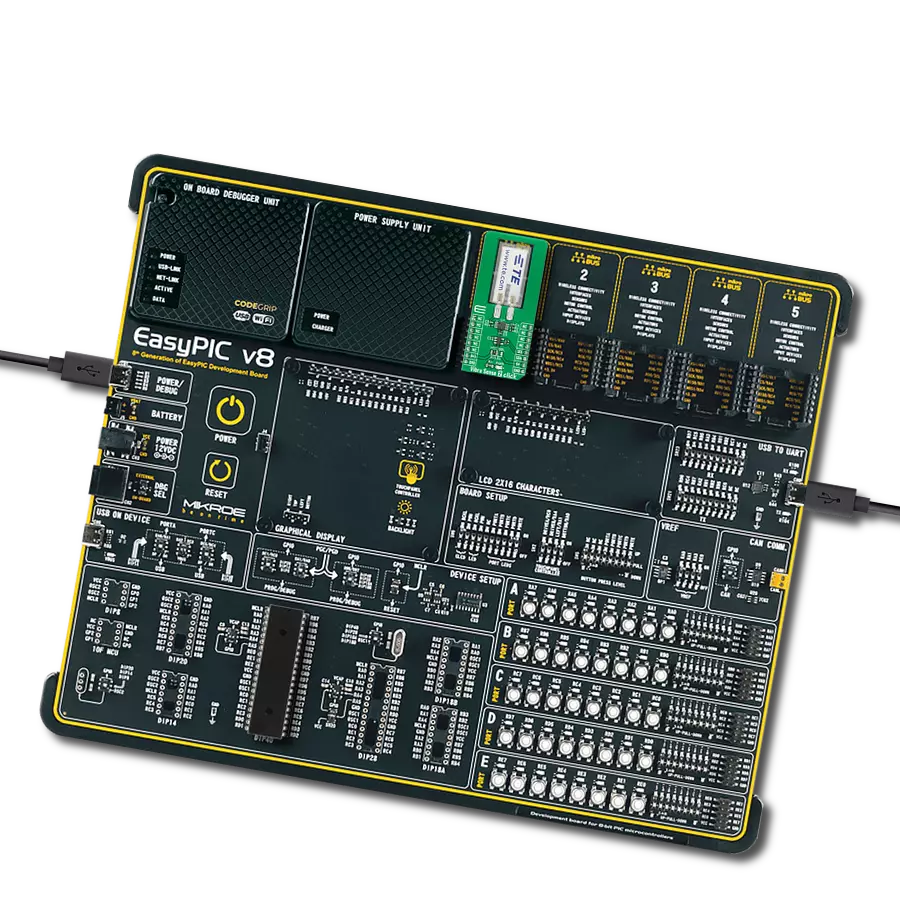Deliver weight and force readings for various applications
A
A
Hardware Overview
How does it work?
Load Cell 8 Click is based on the ZSC31050, an advanced differential sensor signal conditioner from Renesas. The ZSC31050 provides precise amplification and sensor-specific corrections for bridge and temperature sensor signals. Featuring a 16-bit RISC MCU, it runs a polynomial correction algorithm to digitally compensate for sensor offset, sensitivity, temperature changes, and non-linearity. It supports a wide range of resistive bridge sensors with signal spans from 1mV/V to 275mV/V, making it ideal for industrial, medical, and consumer applications. This IC is made for sensors that measure pressure, force, and position, among others. The ZSC31050 integrates both analog and digital pathways, where the analog section is configured differentially to enhance noise rejection. This setup enables the amplification of both positive and negative signals within the common mode range. The differential signal undergoes initial amplification by a programmable gain amplifier (PGA), followed by multiplexing (MUX)
that channels signals from various sources to the ADC for digital conversion. Using a standard I2Cinterface, Load Cell 8 Click communicates with the host MCU in order to program a set of calibration coefficients into an on-chip EEPROM. It supports communication frequencies up to 400kHz and uses an EN pin of the mikroBUS™ socket as a IC enabling function. Load Cell 8 Click offers diverse output modes such as analog voltage, current loop (4 to 20 mA), and PWM. The route of the output signal is selectable via the OUT SEL jumper, directing it through either the AN pin on the mikroBUS™ socket or the OUT pin on the unpopulated J2 header for external applications. Other jumpers include VBR SEL for selecting the ADC's external reference voltage, which is recommended for ratiometric bridges when set to VDDA position, and IN3 SEL, which allows for the use of the IN3 pin for external voltage mode operations, external clocking, or as a ratiometric signal measurement point. This Click board™ can
also interface with temperature sensors via the IR TEMP jumper, which selects the input for temperature-related measurements essential for calibration and correction processes. Selection is made between an internal sensor in the form of a D1 diode or an external using an external resistor for temperature measurement that needs to be populated on RT. It also includes configurable IO1 and IO2 LEDs for indicating alarm statuses and unpopulated headers, J1 and J2, with various signals, some as duplicates from already used signals of the ZSC31050 and some for use as external ones. This Click board™ can operate with either 3.3V or 5V logic voltage levels selected via the VCC SEL jumper. This way, both 3.3V and 5V capable MCUs can use the communication lines properly. Also, this Click board™ comes equipped with a library containing easy-to-use functions and an example code that can be used as a reference for further development.
Features overview
Development board
EasyAVR v7 is the seventh generation of AVR development boards specially designed for the needs of rapid development of embedded applications. It supports a wide range of 16-bit AVR microcontrollers from Microchip and has a broad set of unique functions, such as a powerful onboard mikroProg programmer and In-Circuit debugger over USB. The development board is well organized and designed so that the end-user has all the necessary elements in one place, such as switches, buttons, indicators, connectors, and others. With four different connectors for each port, EasyAVR v7 allows you to connect accessory boards, sensors, and custom electronics more
efficiently than ever. Each part of the EasyAVR v7 development board contains the components necessary for the most efficient operation of the same board. An integrated mikroProg, a fast USB 2.0 programmer with mikroICD hardware In-Circuit Debugger, offers many valuable programming/debugging options and seamless integration with the Mikroe software environment. Besides it also includes a clean and regulated power supply block for the development board. It can use a wide range of external power sources, including an external 12V power supply, 7-12V AC or 9-15V DC via DC connector/screw terminals, and a power source via the USB Type-B (USB-B)
connector. Communication options such as USB-UART and RS-232 are also included, alongside the well-established mikroBUS™ standard, three display options (7-segment, graphical, and character-based LCD), and several different DIP sockets which cover a wide range of 16-bit AVR MCUs. EasyAVR v7 is an integral part of the Mikroe ecosystem for rapid development. Natively supported by Mikroe software tools, it covers many aspects of prototyping and development thanks to a considerable number of different Click boards™ (over a thousand boards), the number of which is growing every day.
Microcontroller Overview
MCU Card / MCU
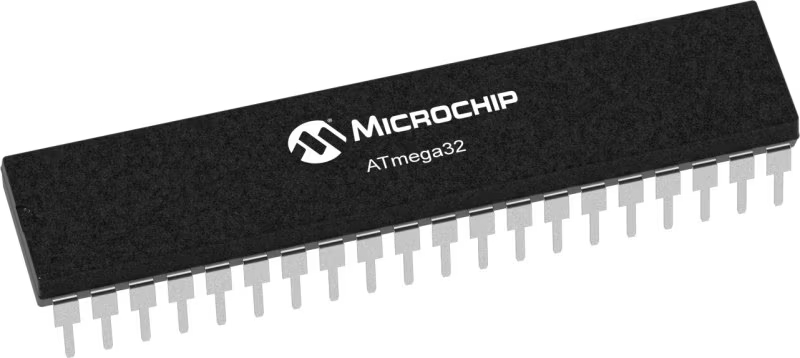
Architecture
AVR
MCU Memory (KB)
32
Silicon Vendor
Microchip
Pin count
40
RAM (Bytes)
2048
Used MCU Pins
mikroBUS™ mapper
Take a closer look
Click board™ Schematic
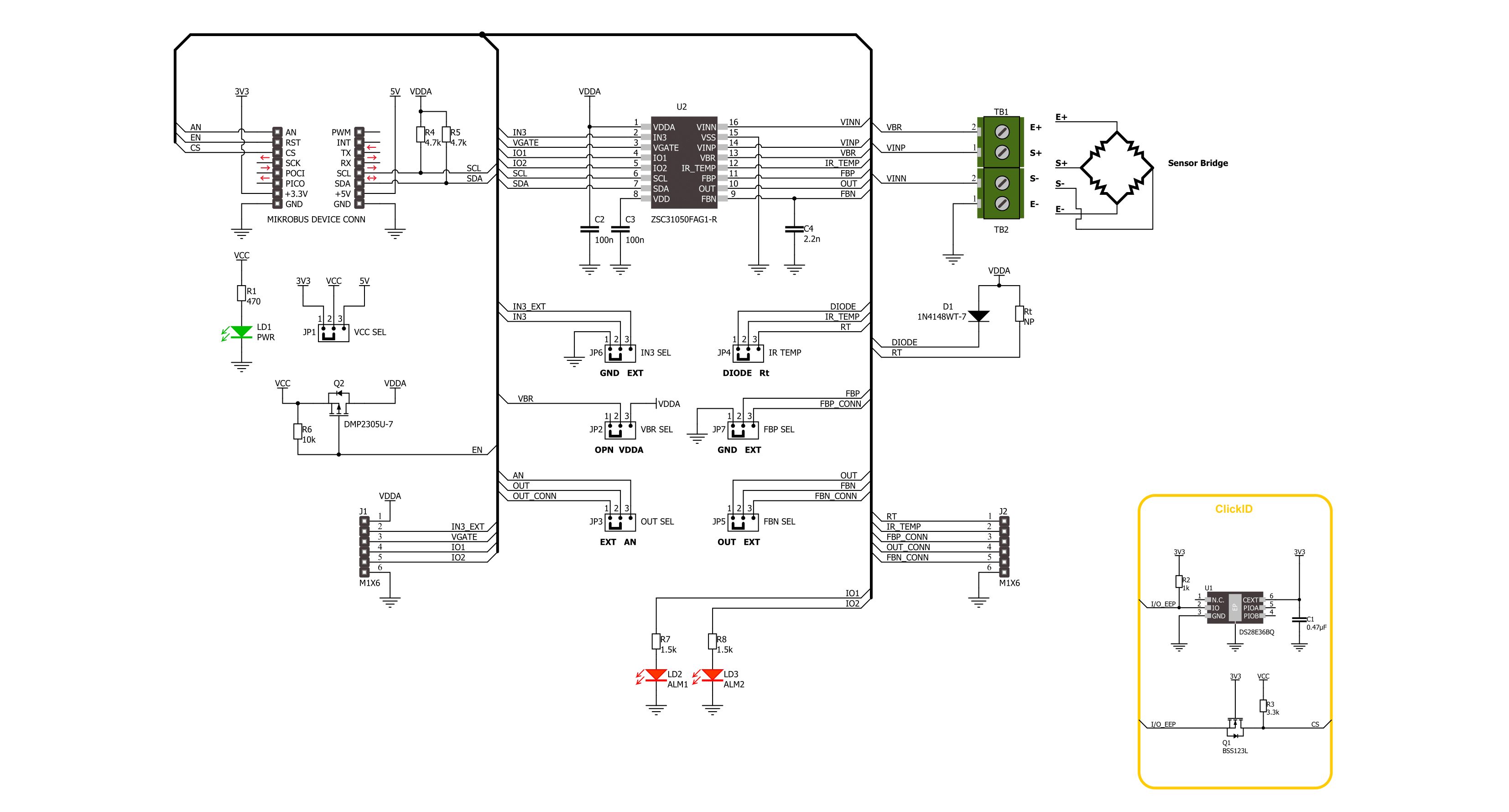
Step by step
Project assembly
Track your results in real time
Application Output
1. Application Output - In Debug mode, the 'Application Output' window enables real-time data monitoring, offering direct insight into execution results. Ensure proper data display by configuring the environment correctly using the provided tutorial.

2. UART Terminal - Use the UART Terminal to monitor data transmission via a USB to UART converter, allowing direct communication between the Click board™ and your development system. Configure the baud rate and other serial settings according to your project's requirements to ensure proper functionality. For step-by-step setup instructions, refer to the provided tutorial.

3. Plot Output - The Plot feature offers a powerful way to visualize real-time sensor data, enabling trend analysis, debugging, and comparison of multiple data points. To set it up correctly, follow the provided tutorial, which includes a step-by-step example of using the Plot feature to display Click board™ readings. To use the Plot feature in your code, use the function: plot(*insert_graph_name*, variable_name);. This is a general format, and it is up to the user to replace 'insert_graph_name' with the actual graph name and 'variable_name' with the parameter to be displayed.

Software Support
Library Description
This library contains API for Load Cell 8 Click driver.
Key functions:
loadcell8_read_raw_adc- This function reads raw ADC value by using I2C serial interface.loadcell8_tare_scale- This function calculates the cell_data which is the raw ADC readings of the empty container by using I2C serial interface.loadcell8_calibration_weight- This function calibrates the weight by calculating the cell_data for the input calibration weight by using I2C serial interface.
Open Source
Code example
The complete application code and a ready-to-use project are available through the NECTO Studio Package Manager for direct installation in the NECTO Studio. The application code can also be found on the MIKROE GitHub account.
/*!
* @file main.c
* @brief Load Cell 8 Click example
*
* # Description
* This example demonstrates the use of Load Cell 8 Click by measuring the weight
* in grams of the goods from the load cell sensor connected to the Click board.
*
* The demo application is composed of two sections :
*
* ## Application Init
* Initializes the driver and reads the tare scale of the empty container, and after
* that, it calibrates the weight scale with a known calibration weight.
*
* ## Application Task
* The demo application measures weight and shows the measurement of scales in grams [ g ].
* Results are being sent to the Usart Terminal where you can track their changes.
*
* @author Stefan Ilic
*
*/
#include "board.h"
#include "log.h"
#include "loadcell8.h"
static loadcell8_t loadcell8;
static log_t logger;
static loadcell8_data_t cell_data;
void application_init ( void )
{
log_cfg_t log_cfg; /**< Logger config object. */
loadcell8_cfg_t loadcell8_cfg; /**< Click config object. */
/**
* Logger initialization.
* Default baud rate: 115200
* Default log level: LOG_LEVEL_DEBUG
* @note If USB_UART_RX and USB_UART_TX
* are defined as HAL_PIN_NC, you will
* need to define them manually for log to work.
* See @b LOG_MAP_USB_UART macro definition for detailed explanation.
*/
LOG_MAP_USB_UART( log_cfg );
log_init( &logger, &log_cfg );
log_info( &logger, " Application Init " );
// Click initialization.
loadcell8_cfg_setup( &loadcell8_cfg );
LOADCELL8_MAP_MIKROBUS( loadcell8_cfg, MIKROBUS_1 );
if ( I2C_MASTER_ERROR == loadcell8_init( &loadcell8, &loadcell8_cfg ) )
{
log_error( &logger, " Communication init." );
for ( ; ; );
}
if ( LOADCELL8_ERROR == loadcell8_default_cfg ( &loadcell8 ) )
{
log_error( &logger, " Default configuration." );
for ( ; ; );
}
log_printf( &logger, " Remove all goods from the scale in the following 5 sec.\r\n" );
Delay_ms ( 1000 );
Delay_ms ( 1000 );
Delay_ms ( 1000 );
Delay_ms ( 1000 );
Delay_ms ( 1000 );
log_printf( &logger, " Calculating tare scale...\r\n" );
if ( LOADCELL8_OK == loadcell8_tare_scale( &loadcell8, &cell_data ) )
{
log_printf( &logger, " Tarring complete!\r\n\n" );
}
else
{
log_error( &logger, " Calculating tare scale." );
for ( ; ; );
}
log_printf( &logger, " Place a %ug calibration weight on the scale in the following 5 sec.\r\n",
( uint16_t ) LOADCELL8_WEIGHT_100G );
Delay_ms ( 1000 );
Delay_ms ( 1000 );
Delay_ms ( 1000 );
Delay_ms ( 1000 );
Delay_ms ( 1000 );
log_printf( &logger, " Calibrating weight...\r\n" );
if ( LOADCELL8_OK == loadcell8_calibration_weight( &loadcell8, LOADCELL8_WEIGHT_100G, &cell_data ) )
{
log_printf( &logger, " Calibration complete!\r\n\n" );
}
else
{
log_error( &logger, " Calibrating weight." );
for ( ; ; );
}
log_printf( &logger, " ___________________\r\n" );
log_printf( &logger, " Start measurements:\r\n" );
log_printf( &logger, " ___________________\r\n" );
Delay_ms ( 500 );
}
void application_task ( void )
{
float weight_g = 0;
if ( LOADCELL8_OK == loadcell8_get_weight( &loadcell8, &cell_data, &weight_g ) )
{
log_printf( &logger, " Weight : %.2f g \r\n", weight_g );
}
Delay_ms ( 100 );
}
int main ( void )
{
/* Do not remove this line or clock might not be set correctly. */
#ifdef PREINIT_SUPPORTED
preinit();
#endif
application_init( );
for ( ; ; )
{
application_task( );
}
return 0;
}
// ------------------------------------------------------------------------ END


















